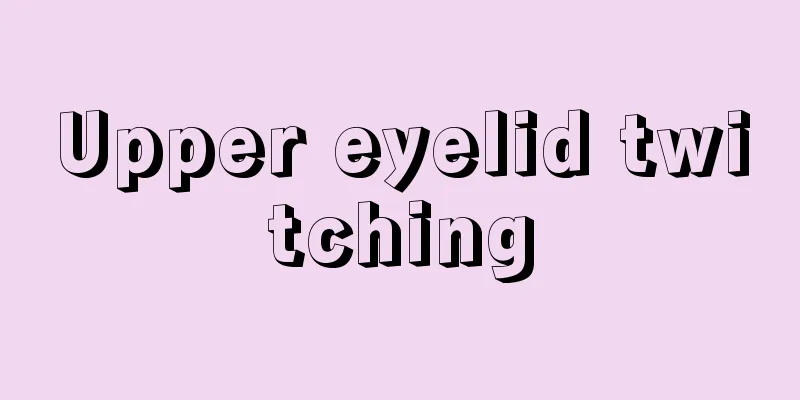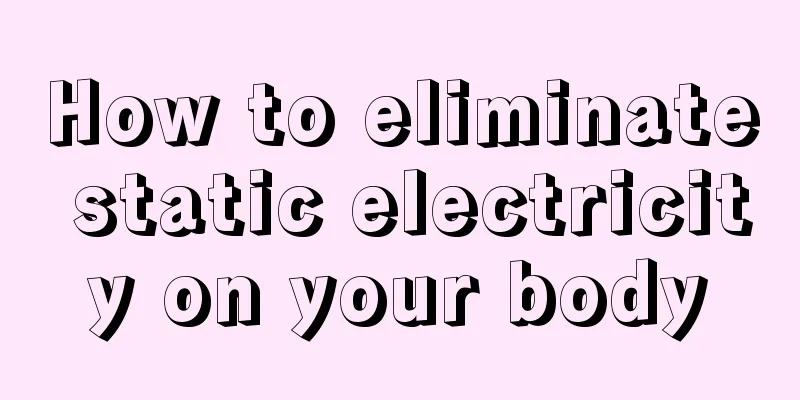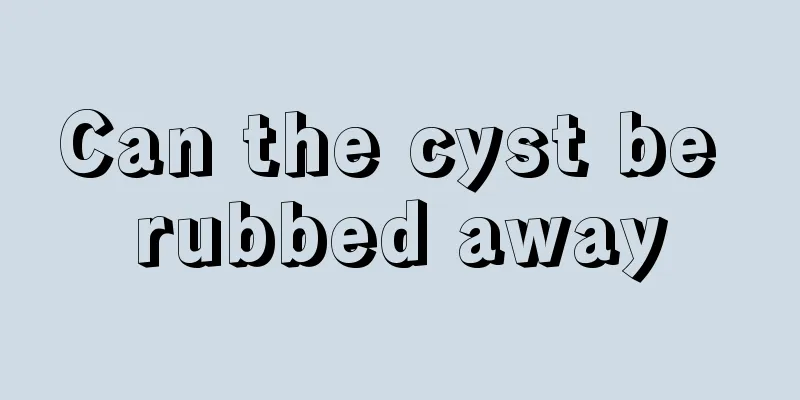Pain at the junction of the back of the head and the neck

|
Freelance writer Ms. Wu has recently been feeling severe pain at the junction of the back of her head and her neck. She also doesn't know which part of the body the connection between the back of the head and the neck belongs to, and the inexplicable pain has seriously affected her normal daily life. So why does pain occur where the back of the head connects to the neck? What factors are related to pain at the junction of the back of the head and the neck? How can we prevent this pain? What is a tension headache Tension-type headaches are common and complex, with a generally long course and a high tendency to relapse. Patients with mild symptoms only feel them when they are obviously nervous or depressed, but patients with chronic headaches can last for days or even weeks. There are two main types: 1. Episodic tension headache Patients with this type of headache often feel a sense of pressure and tightness on both sides of the brain. The headache usually occurs every two or three days, and lasts from 30 minutes to seven hours. This type of headache is not easy for us to notice in daily life and attract our attention because there is no vomiting and nausea, and the headache does not worsen when walking up stairs or doing similar daily activities. If this type of attack occurs less than 10 times, it does not meet the diagnostic criteria for tension-type headache. 2. Chronic tension-type headaches Patients with this type also feel pressure and tightness on both sides of the brain in daily life, and they have more frequent than episodic tension-type headaches and no nausea. Both types are not easy to cause. We found that chronic tension-type headaches that occur for no more than six months do not meet the diagnostic criteria for tension-type headaches. Causes of tension headaches There are many causes of headaches. When we feel anxious, nervous, tired or hungry, it can cause headaches. This type of headache is quite common in daily life. There are two main reasons: 1. Psychological factors Prolonged mental stress, anxiety, depression or poor sleep, high-intensity work, and lack of proper rest and relaxation. For example, college entrance examination candidates put a lot of pressure on themselves, often study day and night, and do not know how to combine work and rest, which can easily lead to tension headaches. Here, candidates are also advised to pay attention to the balance between study and relaxation, relax themselves appropriately, do not always keep their minds tense, and know how to relieve the pressure on themselves. 2. Physiological factors Engaging in a monotonous job for a long time may cause the head, neck or shoulder blades to be in an unhealthy posture, leading to the disease. For example, office workers who spend long hours at their desks writing plans to complete their work can easily develop cervical spondylosis, which can also easily lead to headache symptoms. Signs of a tension headache Tension headaches are easy to be ignored by us, but they are very likely to cause anxiety or depression, so we must not underestimate them. If you encounter a tension headache, you must seek prompt attention and actively cooperate with treatment. It is also important to maintain a good attitude. Next, let’s take a look at the signs of tension headaches. 1. People who suffer from tension headaches generally have psychological factors, that is, they have high stress in life, often feel anxious or depressed, and may have symptoms such as dizziness and insomnia. 2. Headaches are generally bilateral, usually with pain felt throughout the head or even the neck, and rarely just migraines. And they often feel tight and oppressive. 3. The time of headache is not fixed and may occur at any time. 4. The duration of headache varies. Some patients may experience pain for weeks or even months, or the pain may disappear briefly and then recur. The difference between tension-type headaches and migraines Tension headache and migraine are two different primary headache diseases, which are easily confused by us in daily life. Let's take a closer look at the difference between the two! 1. Disease Overview Migraine is a vascular headache, while tension-type headache is a myofascial pain. Compared with migraine, tension-type headache is more common, and about 52% of people will experience it in their lifetime. 2. Pathogenesis Migraine and tension-type headaches are both anxiety disorders and are prone to depression. However, migraine with aura is still a risk factor for ischemic stroke, and approximately 17.3% of patients with chronic tension-type headache have experienced suicidal thoughts. 3. Predisposing and eliminating factors Migraine patients are afraid of noise and light. The triggering factors are stress and weather changes. They are extremely sensitive to noise, light, etc., and taking painkillers has obvious effects. Tension-type headaches are more sensitive to stress, and their triggering factors are stress and lack of sleep. External factors have a lesser impact than the patient's psychological factors. Inner emotional regulation and quality sleep play an important role in the treatment of the disease. How to treat tension headaches Although tension headache sounds complicated, it is a common disease in daily life. Its treatment methods also have different options according to the severity of the disease. The following are several common treatment methods. Come and take a look! 1. Psychotherapy The root cause of tension headaches is people's inner negative emotions such as anxiety and depression. As for how to treat it from a psychological perspective, we should use targeted medicines. We should try our best to alleviate the negative emotions of different patients, pay attention to psychological guidance of patients, let patients know the recurrence of the disease, and at the same time encourage patients and enhance their confidence in overcoming the disease. 2. Behavioral therapy Relaxation training, electromyographic biofeedback training, and tension control therapy are the most widely studied behavioral interventions. Existing experiments provide strong support for the effectiveness of relaxation and electromyographic biofeedback therapy in the control of recurrent tension-type headaches; 3. Physical therapy Spinal manipulation, massage, etc. can relax the nerves. Among them, foot massage therapy is an effective method. If you can regularly massage the corresponding reflex areas of the feet, it can promote blood circulation and improve the body's resistance. The principle of foot reflexology health care is to stimulate the skin of the feet with pressure, which also plays a certain role in the internal organs and other parts of the body. There are many reflex areas on the feet that correspond to internal organs or parts of the body. Regular foot massage is a good way to exercise foot muscles, promote blood circulation, strengthen the body, enhance immunity, and prevent and treat headaches and insomnia. |
<<: Migraine in the right back of the head
>>: Things to note when you get a big bump on the back of your head
Recommend
How to improve the pain on the right side of the head
I always feel pain on the right side of my head, ...
Can I have children in the early stages of liver cancer?
Theoretically, as long as the reproductive system...
What should I do if I have the skin disease pityriasis rosea?
Skin diseases have always been a type of disease ...
What should I do if I have poor sleep for a long time?
Lying in bed every night and unable to fall aslee...
Can I use aloe vera gel during pregnancy?
Pregnant mothers should be especially careful wit...
Gastric cancer patients sometimes feel heartburn and acid reflux
Gastric cancer patients sometimes feel heartburn,...
Three relatively effective treatments for brain cancer
Brain cancer is a malignant tumor that grows in t...
How to relieve muscle spasms
If you want to effectively relieve the problem of...
What are the effects of valvular heart disease?
Heart disease is one of the serious diseases that...
Heart beats too fast while running
When running, the body's demand for oxygen wi...
What should I do if a mosquito bite leaves a red mark?
The summer when mosquitoes are rampant is very sa...
What are the dietary customs of the Hui people
There are many ethnic minorities in my country. D...
Patients should choose appropriate breast cancer treatment according to their different conditions
Breast cancer is very harmful and can cause great...
How to care for advanced lung cancer to stabilize the condition? There are 4 important care methods for advanced lung cancer
When lung cancer patients reach the late stage, t...
What are the causes of acute mental disorders
Acute mental disorder refers to a mental disorder...









